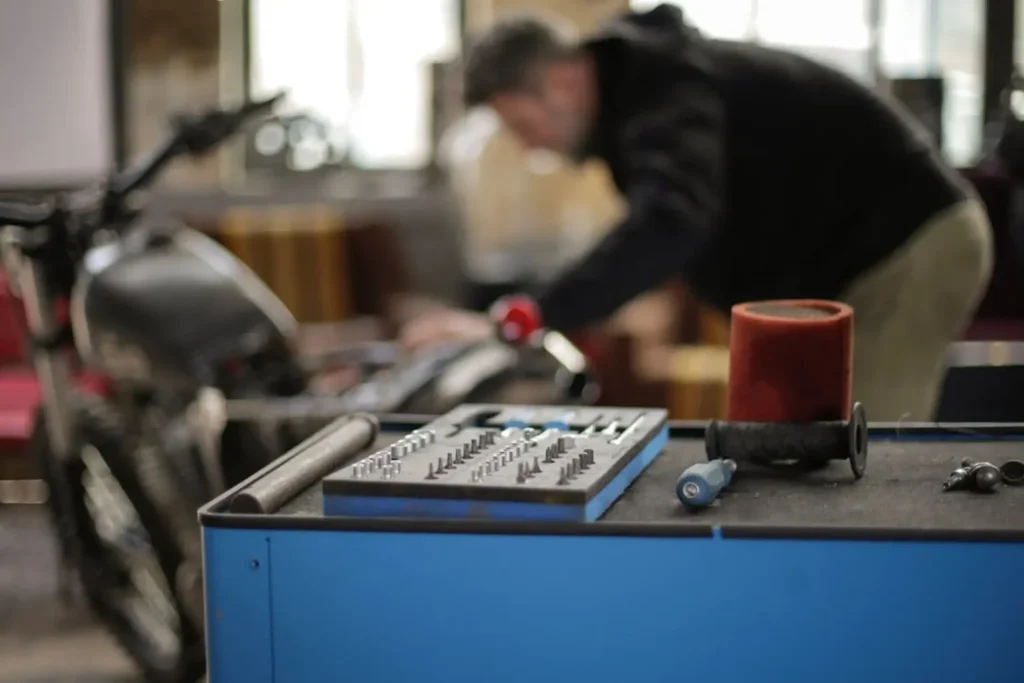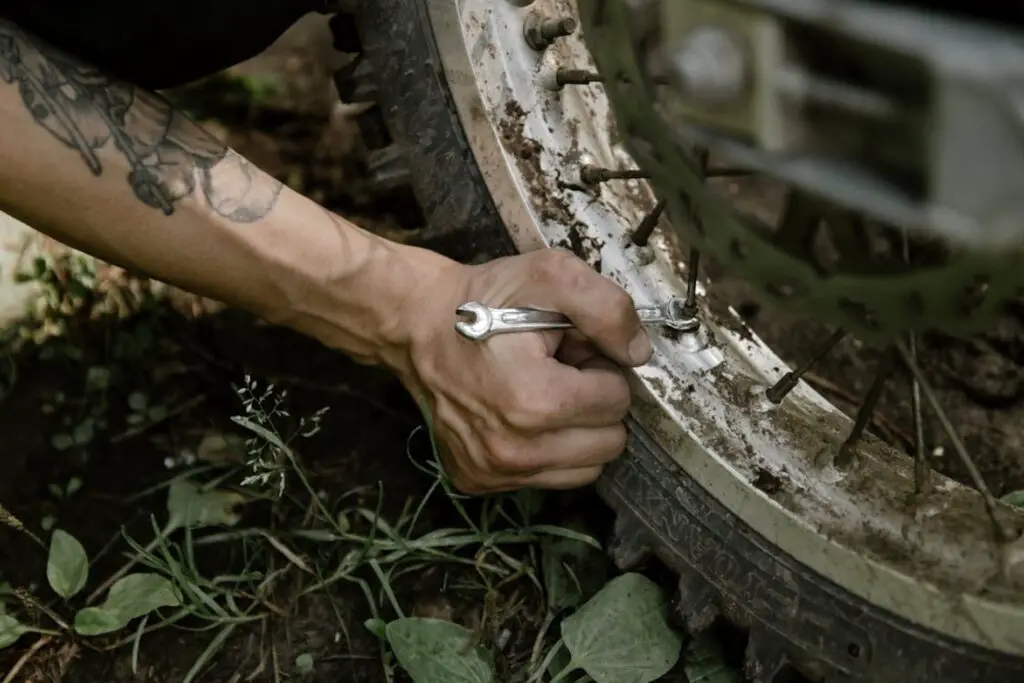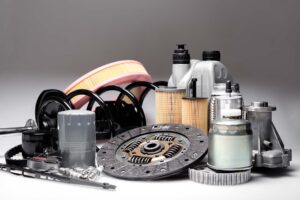If you’re drawn to the world of wrenching and eager to build your mechanical prowess, there’s no better starting point than motorcycles. Their elemental simplicity, coupled with intricate details, provides a playground for aspiring grease monkeys. So let’s explore the easiest motorcycle to work on among several choices. Unlike cars, motorcycles offer a pure mechanical experience, ranging from basic engines to complex assemblies requiring periodic disassembly. Join us on this journey as we navigate the realm of two-wheeled marvels.
The easiest machines to work on in 2024 are Kawasaki KLR650, Royal Enfield Classic 350, Royal Enfield INT650, Yamaha TW200, and Honda Elsinore MT 250. Choose your ride and dive into the wonders of DIY projects.
The Joy of DIY Motorcycle Maintenance
In the realm of custom motorcycles, the pursuit extends beyond the desire for a personalized two-wheeled masterpiece. While the pride of owning a unique bike is undoubtedly a driving force, the journey of building and maintaining a motorcycle offers enthusiasts a deeper, more enriching experience. As the saying goes, it’s not just about the destination – it’s about the journey.
Into the Flow
Psychologist Mihaly Csikszentmihalyi introduced the concept of “flow” – a state where individuals become deeply immersed in an activity, finding pure enjoyment and focus. Working on a motorcycle project creates a haven away from the distractions of modern life. In the solitude of the garage, it’s just you, the bike, and the task at hand.
Intrinsic Motivation
The challenges of a DIY motorcycle project are often met with intrinsic motivation – the drive that comes from personal passion and a genuine connection to the task. Research suggests that intrinsic motivation leads to better performance compared to external motivations like rewards or punishments. Building a motorcycle becomes a self-driven journey.
Shifting Perspectives
The act of rebuilding a motorcycle demands a unique perspective – understanding the needs of the machine and addressing challenges from its point of view. This skill not only aids in achieving the end goal of a running motorcycle but also translates into life lessons.
Effectance Motivation
Psychologist Robert White’s concept of effecting motivation emphasizes the fundamental human need to interact effectively with the environment. Building a motorcycle goes beyond basic needs – it is a pursuit to improve oneself in meaningful ways.
Essential Tools for Motorcycle DIYers
Embarking on the journey of beginner-friendly motorcycle maintenance requires more than just passion – it demands a well-equipped workshop. Whether you’re a seasoned enthusiast or a novice wrench-turner, having the right tools can make all the difference. Here’s a comprehensive list of common tools and equipment essential for every motorcycle DIYer:
- Wrench set,
- Socket set,
- Screwdriver set,
- Torque wrench,
- Pliers,
- Hex key set (Allen wrenches),
- Spark plug socket,
- Oil filter wrench,
- Chain breaker tool,
- Tire pressure gauge,
- Multimeter,
- Feeler gauges,
- Chain alignment tool,
- Oil drain pan,
- Shop towels,
- Safety gear,
- Lift or stand,
- Battery charger,
- Cable lubing tool,
- Workbench.
Remember, investing in quality tools pays off in the long run. Building a well-equipped workshop not only enhances your DIY experience but also ensures the safety and longevity of your beloved motorcycle. As you assemble your toolkit, tailor it to your specific motorcycle model and the types of maintenance and modifications you plan to undertake.

Kawasaki KLR650 – The Rugged DIY Dream
Since 1987, the Kawasaki KLR650 has stood as a paragon of simplicity, with a major update in 2007 introducing water cooling and subsequent tweaks like fuel injection and ABS. It also boasts a five-speed gearbox and minimal suspension adjustments.
This enduring design not only contributes to its reliability but also makes it an ideal starting point for those venturing into motorcycle mechanics. With its rugged simplicity, breakdowns are rare, and DIY motorcycle repairs, if needed, are straightforward. In a world of complexity, the KLR650 remains a timeless icon, proving that simplicity often outshines sophistication. It’s also considered the easiest cruiser motorcycle to work on by many.
Tips for Maintaining the Kawasaki KLR650
One of the most important Kawasaki KLR650 DIY tips is that it requires regular care to ensure optimal performance. Minor service intervals occur every 7600 miles (12000 km), involving an oil change, oil filter replacement, spark plug check, and a comprehensive inspection for leaks, cracks, and other potential issues. Every 15200 miles (24000 km), it’s crucial to check valve clearances, a quick task on the KLR. The liquid-cooled engine mandates regular coolant changes, and fresh brake fluid is vital. To keep your KLR650 running smoothly, here’s a handy table of essential service parts:
| Part | Specifications |
| Oil | SAE 10W-40 Kawasaki motor oil (fully synthetic, semi-synthetic, or standard) |
| Oil Filter | TK03441B G |
| Coolant | Permanent antifreeze (OAT coolant) with ethylene glycol |
| Air Cleaner | Replace if damaged, and clean if necessary |
| Cable Lubricant | Protect all cable life |
| Chain Lube | Motul chain care kit or Scottoiler for long-distance rides |
| Brake Pads | To be determined |
| Battery | Siam Furukawa FTX9-BS |
Royal Enfield Classic 350 – Timeless and Tinkerable
In the realm of Royal Enfield motorcycles, the Classic 350 stands out as a prime example of simplicity and iconic design. Bearing the esteemed Royal Enfield badge, this single-cylinder beauty features a straightforward air-cooled fuel-injected engine, minimizing the learning curve for riders.
The bike offers a seamless experience with a five-speed gearbox, floating disc brakes at both ends, and twin rear shock absorbers. Stripping away excessive bodywork, it allows unobstructed access to its engine, embodying the essence of a naked motorcycle. With minimal panels hindering access, the Classic 350’s design pays homage to the timeless charm of Royal Enfield.
Simple Servicing for the Classic 350
Owning a Royal Enfield is not just about the ride – it’s a commitment to proper care and attention. Here are some quick tips for Royal Enfield Classic 350 maintenance:
- Monitor tire pressure regularly, keeping it at 20 for the front and 30 for the rear when riding solo. Adjust to 22 and 32 respectively when riding with a pillion.
- Clean the chain every 500 km with a Rs. 600 chain cleaner, then use chain spray (Rs. 160). Ensure the cleaner is dry before applying. Rotate the back wheel manually; never engage first gear with the engine running.
- Give your Royal Enfield a pressure wash monthly (Rs. 100), followed by chain and cable lubrication. If time permits, polish metal parts with carnauba wax.
- Combat scratches with Vaseline temporarily and plan for a proper paint job.
- For the first 2000 km, limit throttle use to halfway. Gradually increase speed milestones—under 60 mph till 500 km and 70 mph till 2000 km.
- Refill the tank at the reserve, avoiding overfill due to imperfect sealing. Prevent leaks by not topping it off.
- Daily dusting with a Rs. 300 Jopasu Mini Duster is a must. Use a good bike cover, even in covered parking.
- After riding in the rain, dry your bike, mindful of the hot silencer and exhaust.
- Crank the engine with the kick two to three times before using the electric start. Always use an electric starter in the morning. Count to 60 before riding out, gently opening the throttle.
- Resist changing the silencer – that distinct thump is uniquely yours.
- Maintain a list of noticed issues for your service center mechanic during regular servicing.
- Put the bike in the center stand, run the engine in first gear, and monitor the rear wheel rotation to detect wobbles.

Royal Enfield INT650 – Modern Yet Manageable
The Royal Enfield INT650, an evolution from the Classic 350, presents a substantial upgrade with twin cylinders and increased displacement. Beyond its modern features like fuel injection and ABS, the INT650 maintains the Classic’s simplicity with analog instrumentation and a traditional cradle frame. Despite a radiator for oil cooling and other enhancements, the bike remains a classic beauty, making it an ideal choice for both riders and beginner mechanics seeking a mid-capacity motorcycle.
User-Friendly Upkeep for the INT650
The Royal Enfield INT 650 demands regular care with its short 3000-mile/5000-km service intervals. Checking everything, including valve clearances, is recommended multiple times a year, making it a meticulous task. Valve clearance checks, though not overly complex, can be frequent for riders.
The oil change interval is more forgiving at 6000 miles/10000 km, with the oil filter needing replacement simultaneously. Spark plugs should be changed every 12000 miles/20000 km. Servicing your own INT 650 is convenient due to easy accessibility, and parts are readily available. If you want to run INT650 easy repairs, refer to the table below:
| Part | Royal Enfield Interceptor Spec |
| Engine Oil | JASO MA2-rated fully synthetic oil or SAE 10W-50 API SL (Castrol Power 1 10W-50) |
| Oil Filter | Mobil 1 M1-104A or order from Royal Enfield website |
| Spark Plug | Bosch UR5CC (0.7-0.8mm) or NGK CR8E |
| Air Filter | DNA air filter R-RE65N18-01 |
| Brake Fluid | DOT 4 brake fluid, e.g., Castrol DOT 4 |
| Fork Oil | 2W 25 HPCL fork oil |
| Head Lamp | H4 60/55W bulb |
| Brake Lamp | P21/5W Halogen |
| Chain | Motul chain paste for periodic lubrication |
| Grease | Lithium soap-based grease for general components (bearings, swing-arm, kickstand, etc.) |
Yamaha TW200 – The Approachable All-Rounder
The Yamaha TW200, a kindred spirit to the KLR650, embodies a classic approach to trail adventures. Inheriting the KLR’s air-cooled tradition, this bike proudly sidesteps modern electronics, steering clear of fuel injection, ABS, or electronic intricacies in its simple instrument cluster. With the absence even of a fuel gauge, it relies on a straightforward fuel tap for reserve mode. Renowned for its reliability, the TW200 serves as an excellent starting point, allowing riders to comfortably master maintenance skills before delving into more complex tasks.
Easy Maintenance for Motorcycles Guide Like the Yamaha TW200
Yamaha TW200 servicing is hassle-free with a simplified maintenance schedule. Every 3000 miles or 5000 km, or every six months, perform essential tasks. Regular oil changes, air filter cleaning, and spark plug checks or replacements (NGK D8EA) are crucial.
Additionally, prioritize valve clearance adjustments, inspecting the cam chain, brakes, clutch, and control cables. Lubricate key components such as the rear arm pivot and brake/lever pivot every six months to ensure smooth operation. This routine care will uphold your TW200’s reliability and longevity on the road.

Honda Elsinore MT 250 – A Classic DIY Choice
The Honda Elsinore MT 250 provides an ideal starting point for enthusiasts delving into motorcycle restoration. Not only does it offer practical education in 6-volt electrical wiring, but its two-stroke engine, a rarity in the current market outside the off-road segment, is a robust and resilient option.
The simplicity of a two-stroke engine, with fewer moving parts, makes restoration comparatively more straightforward than its four-stroke counterparts. With Elsinore’s significant production numbers and construction primarily from steel, obtaining restoration parts or finding replacements is both accessible and convenient.
Preserving the Honda Elsinore MT 250
When it comes to Honda Elsinore MT 250 care, start by ensuring the bike runs smoothly, focusing on the essentials like air, fuel, spark, and compression. Next, address potential issues with dried-out seals and consider a re-bore, with spare parts readily available. You should also test the oil injection pump and pay attention to the clutch, performing regular checks and using quality oil.
Deal with gas tank rust using products like Metal Rescue and maintain the fuel system. Be prepared for crank seal replacements and potential engine work, as two-stroke engines, though simple, require meticulous tuning. On top of that, you should recognize the bike’s rarity, preserving its originality during the restoration.

Choose the Easiest Motorcycle to Work On and Embark on a Mechanical Journey
Home motorcycle servicing is more than a mechanical venture – it’s a journey that fosters skill development, intrinsic motivation, and a profound connection to the machine. Whether tackling the intricacies of a vintage Honda Elsinore MT250, the ruggedness of a Kawasaki KLR650, the classic appeal of a Royal Enfield, or the simplicity of a Yamaha TW200, each project offers unique challenges and rewards. From mastering engine tuning to navigating the nuances of two-stroke systems, these restorations become a canvas for learning and self-discovery.








